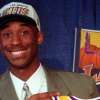Offensive rebounds are one of the “quiet” stats that bookmakers often misprice. A team or player who consistently collects the ball after missed shots gains extra possessions and second-chance points — and you gain an opportunity to find value on total lines. Let’s break down how these bets work, what drives offensive rebounds, and how to pick spots where the Over/Under has a better chance to cash.
What Exactly Counts As An Offensive Rebound
An offensive rebound (ORB) is recorded when the shooting team gains first possession of the ball after a missed attempt — either from the field or from a missed free throw. Box scores separate rebounds into offensive and defensive. We care about the former: it extends the possession and increases expected points without handing the ball to the opponent.
Which Markets The Sportsbook Offers
- Team Offensive Rebound Total. For example: “Real Madrid Over 11.5 Offensive Rebounds.”
- Player Offensive Rebound Total. A prop such as “Player X Over 3.5 Offensive Rebounds.”
- Quarter/Half Totals. Useful when you expect a surge from specific rotations.
- Live Total. The line updates with pace, shooting, and rebounding in real time — you must read the game flow quickly.
Notation is standard: Over — total higher, Under — total lower. Team-specific totals are commonly listed simply as Team Totals (individual team totals).
What Moves The Line: Pace, Accuracy, And Size
- Pace. More possessions mean more shots and therefore more potential misses and rebounds. Matchups between fast teams naturally raise the ORB “ceiling.”
- Shot Profile. High three-point volume produces long rebounds. Pairs that launch a lot from deep at average accuracy create a fertile environment for offensive boards.
- Rebounding Matchup Balance. A strong offensive-glass unit facing a weak defensive glass (low DRB%) is a green flag for the Over on ORB.
- Size And Rotation. Dominant bigs, high-motor crashers with good feel for the bounce, and “two-big” lineups all increase second-chance odds.
- Fouls And Fatigue. Early foul trouble for the opponent’s key defensive rebounder and back-to-backs in the schedule weaken control of their own glass.
How To Read The Numbers: A Quick Metric Pack
- ORB% (Team). Share of offensive rebounds collected after the team’s own misses.
- Opponent DRB%. How well the opponent clears its defensive glass.
- Second-Chance Points. Tangible output of ORB; a proxy for its value.
- Contested Rebounds and positional box-outs (in advanced data) help judge whether the edge is repeatable rather than a one-off spike.
Where To Find An Edge: Over And Under Scenarios
Over (ORB) hits more often with high pace, average/below-average field-goal accuracy, and a clear advantage on the glass for one side. Weak box-outs from the opponent and high three-point share for both teams add further tailwinds.
Under (ORB) is preferable in half-court games where both sides diligently secure the defensive glass and shooting accuracy is above average. Tight rotations without energetic “second-level” rebounders and a coaching emphasis on getting back instead of crashing also favor the Under.
Live Approach: React To The Picture, Not The Score
- If the first 6–8 minutes show weak opponent box-outs and frequent long caroms, a live Over on the team with active crashers often has value.
- Conversely, if the opponent is vacuuming its glass and tempo is controlled, grabbing the Under — especially late — makes sense, as coaches tend to prioritize securing possessions over taking rebounding risks.
Common Bettor Mistakes
- Ignoring The Lineup. Big-man minutes, returns from injury, and foul trouble reshape the picture faster than monthly averages suggest.
- Copy-Pasting Team Totals To A Player. A high team ORB doesn’t guarantee a player Over if he shares the glass with another monster.
- Underrating Opponent Style. Teams that emphasize getting back on defense after shots often sacrifice offensive-glass attempts by design — a negative for the Over.
- Betting The Name. A big name isn’t synonymous with consistent ORB; role and floor spacing at the moment of the shot matter more.
Short Orientation Cases
Case 1: Soccer Total For Contrast. Barcelona vs Atlético Madrid, line “Over 2.5 goals.” Three or more total goals win; 0–2 loses. A basic example of a classic score total, not a stat prop.
Case 2: Team ORB In Basketball. Suppose Anadolu Efes faces an opponent with a low DRB%. The line “Efes Over 11.5 Offensive Rebounds.” Fast pace, heavy perimeter volume, and size edge combine into a pro-Over argument.
Case 3: Player Prop — Offensive Rebounds. A switchable forward with good positioning gets 30+ minutes against a defense without a dominant center. Line “Over 3.5.” If comparable matchups show a 3.8–4.1 average and today adds pace/fatigue factors for the opponent, the Over is justified.
Pre-Click Checklist
- Check pace and 3PA shares for the matchup.
- Review last 5–10 games (and similar-style opponents) for team ORB% and opponent DRB%.
- Confirm personnel: big-man minutes, limitations, potential foul trouble.
- Assess coaching principles: crash the glass or get back?
- Shop the number across several operators and take the best price.
- In-play — focus on actual caroms and spacing rather than only the pre-match model.
Offensive rebounding is about discipline and detail. The better you read pace, shot profiles, and a matchup’s rebounding dynamics, the more often offensive-rebound totals will work in your favor.






